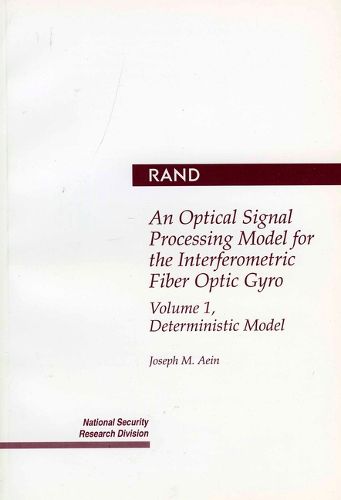Readings Newsletter
Become a Readings Member to make your shopping experience even easier.
Sign in or sign up for free!
You’re not far away from qualifying for FREE standard shipping within Australia
You’ve qualified for FREE standard shipping within Australia
The cart is loading…






This report presents the results of a communication theoretic model used to analyze the operation of Interferometric Fiber Optic Gyroscopes (IFOG). The IFOG is an all-solid-state rotation-rate sensor employed in miniature inertial measurement units (MIMU). The IFOG can achieve a navigation grade of performance (0.01 degree/hour drift rate) and offers the considerable advantage of reducing instrument costs by a factor of two or more over the current ring laser gyroscope (RLG) technology base. A simplified classical propagation model is used to describe the optical beams employed. Optical signal modulation is impressed with the following goals: (1) increase the linearity of the rotation-rate measurement and (2) mitigate the deleterious effects of the optical scatter noise unavoidably generated by the desired light beams as they traverse the optical pathways of the IFOG. This report deals with goal (1) above. The following are analyzed: (1) AC bias modulation used to linearize the IFOG instrument; (2) closed-loop, feedback operation to extend the dynamic range; and (3) serrodyne operation. The analysis establishes the performance relationships among the appropriate optical signal parameters and allows for their optimization.
$9.00 standard shipping within Australia
FREE standard shipping within Australia for orders over $100.00
Express & International shipping calculated at checkout
This report presents the results of a communication theoretic model used to analyze the operation of Interferometric Fiber Optic Gyroscopes (IFOG). The IFOG is an all-solid-state rotation-rate sensor employed in miniature inertial measurement units (MIMU). The IFOG can achieve a navigation grade of performance (0.01 degree/hour drift rate) and offers the considerable advantage of reducing instrument costs by a factor of two or more over the current ring laser gyroscope (RLG) technology base. A simplified classical propagation model is used to describe the optical beams employed. Optical signal modulation is impressed with the following goals: (1) increase the linearity of the rotation-rate measurement and (2) mitigate the deleterious effects of the optical scatter noise unavoidably generated by the desired light beams as they traverse the optical pathways of the IFOG. This report deals with goal (1) above. The following are analyzed: (1) AC bias modulation used to linearize the IFOG instrument; (2) closed-loop, feedback operation to extend the dynamic range; and (3) serrodyne operation. The analysis establishes the performance relationships among the appropriate optical signal parameters and allows for their optimization.